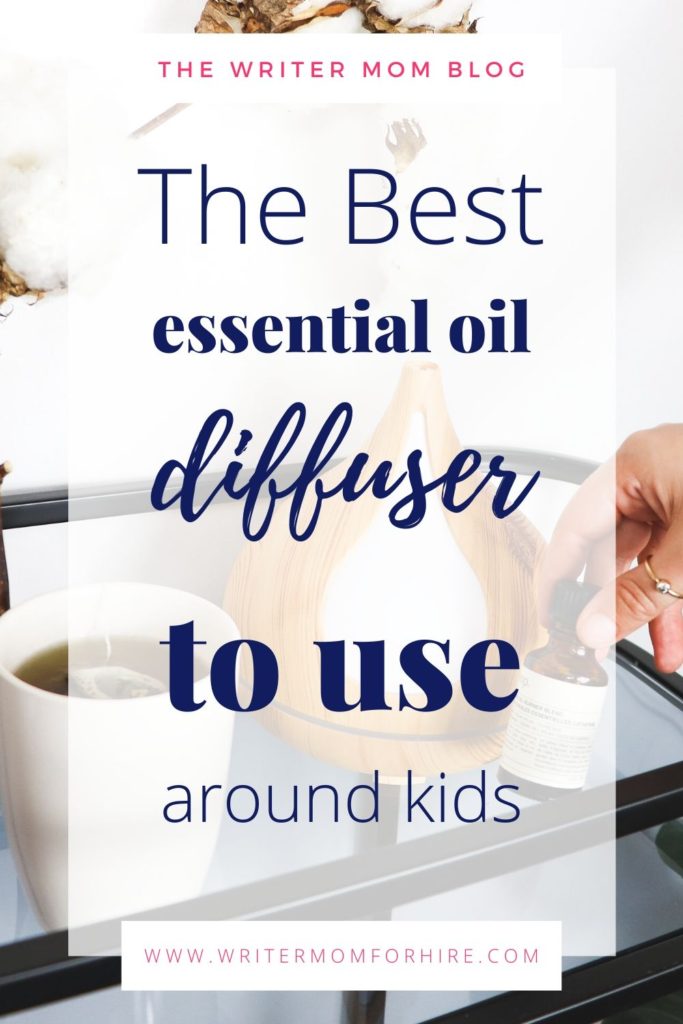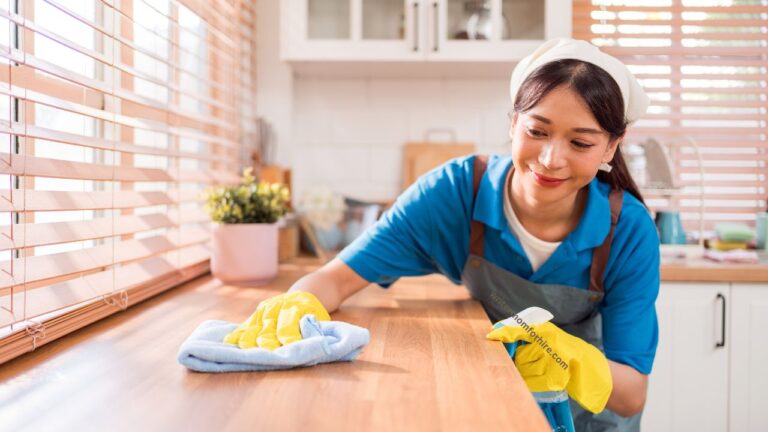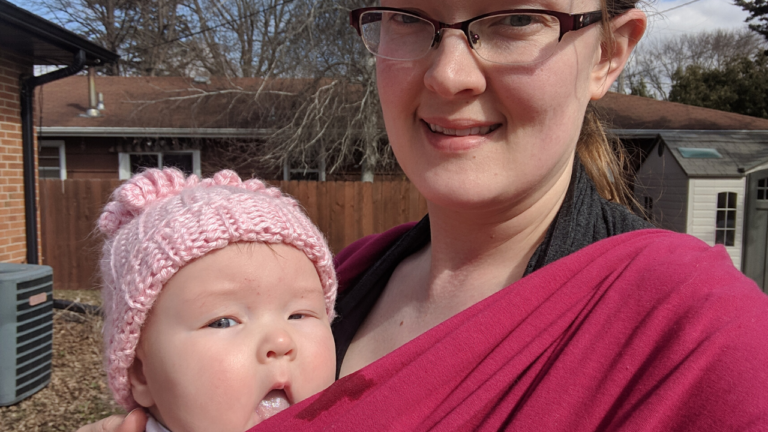What’s the Best Essential Oil Diffuser for Kids?
This post may contain affiliate links and we may earn commissions when you make a purchase through these links (at no extra cost to you). See our disclosure policy for more details.
Wondering what’s the best essential oil diffuser for kids bedrooms?
With the wide variety of essential oil diffusers available — not to mention numerous brands to choose from — how does one decide which is best to use around kids?
…and does it even matter? (Yes, it does!)
If you are looking for an aromatherapy diffuser for your baby’s or child’s room, or anywhere in the house for that matter, it’s important to understand how each type works.

I am not a medical professional, and this information is not intended to replace medical advice.
Types of Essential Oil Diffusers
Aromatherapy diffusers work by dispersing tiny molecules of essential oil into the air in a fine mist. There are four main types to choose from; here are the basics on each type.
Ultrasonic
Sometimes referred to as vaporizers, ultrasonic diffusers use small vibrations to release a fine mist of essential oils (diluted with water) into the air.
While they use water as a transference mechanism, they do not rely on steam. Essentially, the oils sit on top of the water until the ultrasonic vibrations agitate them, then the oil molecules separate, releasing the particles into the air in a fine mist.
Heat
A heat diffuser heats up the essential oils, which causes it to evaporate into the room. This type comes in many different models, from electric to candle and lamp ring.
Each of these models uses a tray that holds the oil next to the heat source. While they get the job done, the heat changes the essential oils at the chemical level, potentially limiting the health benefits of the oils.
Evaporative / Fan
Evaporative, or fan, diffusers hold the essential oils in an absorbent material, such as a pad or wick. The diffuser uses a fan to move the air across the absorbent material. This produces the energy required for the oil molecules to evaporate into the air.
Nebulizing
A nebulizing diffuser uses cold, pressurized air to force undiluted oil molecules into an atomizer, breaking them down into fine particles and pumping them out into the air.
It’s essentially a powerful vacuum that pulls the essential oils from the bottom of the tube all the way to the top, creating a fine mist. With a nebulizing diffuser, you can control the amount of oil that is released into the air but, again, it is undiluted.
I have only used an ultrasonic diffuser, so I had to do a little research to find out which are the best. It seems that ultrasonic and nebulizing are the most popular types. So, does this mean you can use both types around children?
The Best Essential Oil Diffuser for Kids is…
World-renowned researcher Robert Tisserand recommends using an ultrasonic diffuser above all if you have kids in the house. Ultrasonic diffusers are best because you can dilute the oils to a safe ratio when children are present.
I use this type of ultrasonic diffuser, not only because it’s inexpensive, but also because I needed a night light for the bedroom. And if you so choose, it can be used solely as a humidifier sans essential oils.

Even though essential oils are considered “natural”, they are not necessarily safe for everyone. And when it comes to children, I would rather err on the side of caution.
Tisserand advises using ultrasonic diffusers for a maximum of 60 minutes at a time around children. He then recommends turning the diffuser off and leaving a rest period of 30-60 minutes before diffusing again.
However, he advises against routinely diffusing essential oils around babies and toddlers, unless doses are kept to a minimum.
This means only two to three drops per day diluted with water in an ultrasonic diffuser.
“Great caution is necessary for infants. Since neonatal skin does not mature until three months of age, it is more sensitive and more permeable to essential oils. A newborn is also less equipped to deal with any adverse effects than an adult because of lower metabolic capacity, i.e., enzymes present in lower concentrations. These cautions apply even more to premature babies, and here it would be prudent to avoid all use of essential oils.” (Essential Oil Safety, pages 48-49)
How to Use an Ultrasonic Diffuser
Never used an ultrasonic diffuser before? It’s simple! Here’s how it works.
- Fill with cool tap water.
- Add a few drops of your chosen essential oil.
- Turn your diffuser on and let it run.
- When you’re done, clean it and dry it out.
Additionally, you might have to set a timer or change the frequency at which the diffuser runs (constant flow or intermittently).
Benefits of Aromatherapy
Need help sleeping? Diffuse some lavender. Want to get focused? Try peppermint or lemongrass for an energy boost and increased focus.
You can achieve a number of benefits from diffusing essential oils in the home.
- Relaxation and stress relief
- Improved sleep
- Cold and allergy relief
- Odor elimination
- Mood elevation
- Appetite control
- Insect repellent
- Energy boost
- Pleasant aroma
Whatever your reason for using an aromatherapy diffuser, though, it’s always wise to follow any safety precautions when there are kids around.
Safely Diffusing Essential Oils Around Kids
Again, natural doesn’t necessarily equal safe. Let’s go over some basic guidelines to follow when using an essential oil diffuser in your baby’s or kid’s room.
1. Avoid diffusing around babies under three months of age.
2. Always use pure oils that have not been mixed with another substance.
3. Store them in a safe place. While it may seem obvious, it’s critical that you keep bottles of essential oils out of the reach of children. Too many essential oil poisoning incidents have occurred when children gained access to a bottle and ingested the contents.
4. Be extra cautious if your child has asthma or breathing problems. Certainly consult with a professional first if your child has any known health concerns.
5. Always use a low dosage around children. The recommendation is two or three drops diluted in water using an ultrasonic diffuser.
6. Always keep your diffuser clean to prevent bacteria growth.
7. Research the safety of each oil before diffusing it around children. There is a lot of contradictory information online about which essential oils are safe for kids, so carefully consider the source of your information.
Not only is ultrasonic the best essential oil diffuser for kids, but it is inexpensive to purchase through Amazon.
I like this cool mist diffuser because it doubles as a night light (and is super budget friendly).
But if you prefer something more decorative, this Smart Diffuser looks beautiful, has great reviews — and it’s even compatible with Google Assistant and Alexa.
Read More:
Using Essential Oils to Help Baby With Cold & Congestion
Diffusing Essential Oils Around Babies and Toddlers: Is It Safe?








